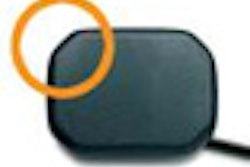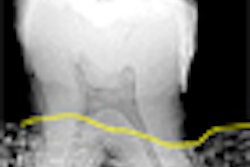
A new study by dental researchers in Turkey once again begs the question: How many times can you use a phosphor plate before it needs to be replaced?
Some digital radiography manufacturers say the plates can be used 1,000 times or more before losing their ability to capture a diagnostic image. But because the plates scratch so easily, most offices will be lucky to get 500 uses out of each plate, according to the Digital Dentist.
A 2004 study concluded that 95% of phosphor plates were deemed nondiagnostic after only 50 uses (Journal of Contemporary Dental Practice, May 15, 2004, Vol. 4:2, pp. 57-69). Now a new study claims phosphor plates are good for at least 200 uses (Dentomaxillofacial Radiology, January 2009, Vol. 38:1, pp. 42-47).
So who's right?
Photostimulable phosphor plates (PSPs) offer some advantages over the newer solid-state CCD or CMOS sensors used in digital x-ray systems -- most notably ease of use and cost ($25 for a phosphor plate versus several thousand dollars for a solid-state sensor). However, they are more time-consuming to use (due to the added laser scanning step) and have a propensity to scratch easily. In addition, the image quality can degrade over time with repeated use (due to the scratches), forcing more retakes.
But independent research quantifying the number of times a PSP can be used before it loses its diagnostic integrity has been limited. More studies have focused instead on the effects of scanning delay on PSP image quality (Oral Surgery, Oral Medicine, Oral Pathology, Oral Radiology, and Endodontology, November 2006, Vol. 102:5, pp. 673-679; Dentomaxillofac Radiol, March 2006, Vol. 35:2, pp. 74-77; Dentomaxillofac Radiol. May 2006, Vol. 35:3, pp. 143-146).
This gap prompted researchers from Ege University and Yeditepe University in Turkey to design a study that would test the service life of PSPs in a clinical setting. Five unused DenOptix PSPs (Gendex Dental Systems) were exposed with an x-ray device and converted into digital images using the OpTime system (Soredex) installed in the department of oral diagnosis and radiology at Ege University. Subsequent images were obtained from the plates at 20, 40, 60, 80, 100, 120, 140, 160, 180, and 200 exposures.
Digital subtraction radiography
A process called digital subtraction radiography was used to evaluate all the images. According to lead author Selin Ergün, D.D.S., Ph.D., of Ege University Faculty of Dentistry, digital subtraction radiography allows the presence of any corruption of the plates to be detected because "in a perfect subtracted image, only the pixels which had been modified between the first and last image acquisition time are revealed, either as black or white."
"Researchers usually measure image quality by displaying the images to a group of observers who have to perform a specific diagnostic task, then comparing the observations of one or more other sensor systems with conventional film-based images," the researchers wrote. While some studies have utilized the changes within the mean gray values (MGVs) of the pixels of digital images to compare quantitative vales, they added, "we have not encountered any research that investigated the corruption of the plates, which may contribute to the loss of radiographic information and, consequently, to the reduction of the image quality."
In their study, the researchers found that the MGVs of the subtracted images varied between 126.25 and 127.59, and the difference (p = 0.11) was not significant among the three exposure groups (20-80 exposures, 100-140 exposures, and 160-200 exposures). However, the differences between the MGVs of the plates on each exposure setting did differ from those of the baseline image (p < 0.05).
"The findings of this study revealed that even though a slight deterioration occurred after the first exposure, each plate can be used up to 200 times," the researchers concluded. "The experiences with DenOptix PSPs indicated the durability of this imaging system may be limited despite the manufacturer's claim that the phosphor plates can be used indefinitely."
However, Dr. Ergün added in an e-mail to DrBicuspid.com, "knowing that 200 exposures is a very low number to investigate the presence of deformation on the plates during clinical conditions, our results ... can be accepted only as preliminary data. Further studies are required."
Clinical reality
On a more critical note, Allan Farman, B.D.S., M.B.A., Ph.D., D.Sc., a professor of radiology at the University of Louisville in Kentucky, said the study has "little or nothing to do with clinical reality" because the research was conducted in vitro in a laboratory setting. In a true clinical setting, phosphor plates can be subjected to damage from biting by the patient or bending while being placed in the mouth.
However, Dr. Farman added, the OpTime system does have advantages over most competitors in that less handling of the plates is needed. "Most problems with phosphor plates come from mishandling individual intraoral plates (scratching and contamination) rather than wear and tear during laser scanning."
Jackie Raulerson, media relations manager for Gendex Dental Systems -- the company that manufactures the DenOptix PSP used in the Dentomaxillofacial Radiology study -- agrees.
"As a former practicing hygienist, I can tell you that the greatest deterrent to plate longevity is the care the operator takes," she said. "If a plate is badly scratched, bent, or cracked, even after just one use, it may need to be replaced so that full radiographic diagnosis can be achieved. If the plates are being properly handled and maintained, thus eliminating damage in the first place, they of course will last longer."
Other factors, such as excess light exposure, can also affect the life of a PSP and image quality. "In the rare cases where the plates themselves become contaminated, damage or degradation to the plate will result unless proper decontamination solutions are used and instructions are closely followed," Raulerson said.
Dr. Farman contends that the discussion over PSP lifetimes will eventually become moot as more practitioners transition to solid-state detectors -- despite the higher cost.
"While PSP technology does provide digital images, because laser scanning is needed it cannot achieve the same immediacy possible with solid-state sensors because of the laser scanning," he said. "PSP technology is losing favor in medicine as it is replaced by solid-state detectors, and I think a similar trend will occur in dentistry."
Copyright © 2009 DrBicuspid.com



















